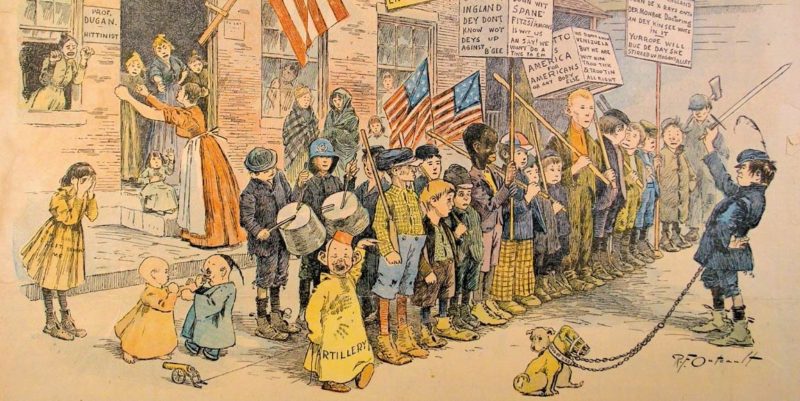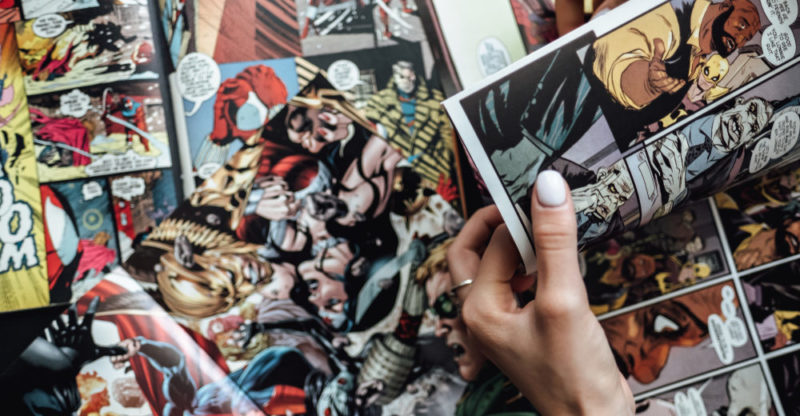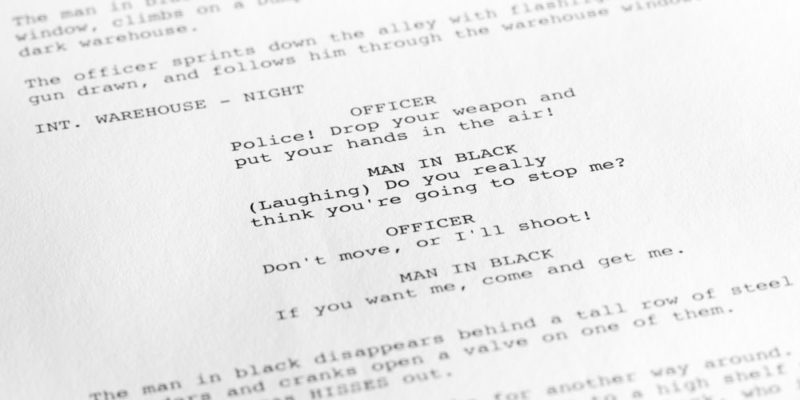We explain what the cartoon is, how it is structured and its main functions. In addition, its general characteristics, genres and formats ...
What is the Cartoon?

The comic strip, also known as a comic, comic strip, comic book, graphic novel or sequential art, is an artistic and journalistic genre that consists of a series of illustrated vignettes, with or without accompanying text, which, when read in sequence, recompose a story.
Comics can be made on paper or in digital form (they are then called e-comics or webcomics ), either as a strip of boxes, a full page, a magazine or a complete book. Their stories can be humorous or satirical, juvenile, childish, or they can be literary narratives.
Many scholars of this genre qualify it as the ninth art, placing it among the Fine Arts along with painting, literature and cinema, with whom it has the most in common.
Cartoon origin

The origins of the comic, as of any art form, are uncertain. Many explain that ancient hieroglyphs would be a similar first form of expression, but political satire and graphic humor are, in society after the press and the daguerreotype, their clearest antecedents.
Despite the numerous antecedents in Europe and Japan, the first cartoon recognized as such was published in 1895 in the United States and it was about "Yellow Kid", a satirical character who wore a yellow cocoon with political messages in nod to the reader.
Cartoon structure

The structure of the comic or cartoon is usually composed of:
- Bullets: Boxes in which the action is represented and that distinguish the imaginary universe from the rest of the blank page. They can be of different sizes, even cover the entire page.
- Illustration: Representation of the imagined reality, which takes place within the vignettes through an artistic line of its own style, dependent on the author.
- Fumetti or sandwich: Text balloons that allude to the different representations of speech (of the characters or the narrator) in the visual story.
- Expression lines: Set of graphic characters that accompany the illustration and refine what is expressed, adding meanings that are difficult to express visually such as movement, sensation, etc.
- Onomatopoeias: Verbal expressions of the sound of things, widely used in the comic.
- History or anecdote: General theme of the work, be it a long story like a novel, in installments like a magazine or a three-panel comic “gag”.
Cartoon function
The comic strip, like art forms, does not have a specific function in society, beyond that of entertaining the public, parodying reality or transmitting messages to the reader.
However, the comic strip as a communication technique can be used for pedagogical or explanatory purposes (as in educational books or instruction manuals).
Cartoon genre

The comics are ordered based on various thematic genres:
- Comical or satirical: It seeks to make people laugh, either as mere entertainment or as part of a project with political intentions.
- Of adventures: Typical of young readership, it tells more or less fantastic stories in challenging environments that a hero must go through.
- Science fiction: It recreates futuristic environments in which technology and its consequences offer aesthetic, political or social reflections of interest, such as space travel, new forms of life, etc.
- Police: It tells detective stories in which the authorship of a crime is hidden.
- Erotic or pornographic: It tells stories of more or less explicit adult content.
- Horror: Tell stories of fear and suspense.
- Sleeve: Japanese variant of the western comic industry, characterized by its own style, storytelling and editorial features.
Cartoon recognition
The comic has been historically belittled, regarded as a minor, childish or disposable expressive form. This fame has to do with the origins of its overcrowding, linked to the newspaper that quickly lost its validity and was discarded, or to the fantastic and youthful stories magazines that in many areas were considered a bad influence.
However, in recent times this has changed considerably, and today we can speak of the "ninth art", legitimized from numerous editorial sources, critics and even by institutions as prestigious as the Pulitzer Prize, awarded to the graphic novel "Maus" by Art Spiegelman in 1992.
Cartoon industry

Despite its more traditional origins, the comic strip today forms a true publishing industry, with a worldwide presence and in all languages, in which companies such as the North American Marvel Comics, Image Comics or DC Comics compete with other regional giants to monopolize sales of the item.
Cartoon Professionals
Different professionals are involved in the contemporary production of a comic strip, such as:
- Screenwriter: Writer who builds the story and defines the events that will happen.
- Cartoonist: Visual artist who illustrates the characters and situations that make up the story.
- Colorist: Secondary artist who is in charge of adding colors and their grades through a computer program.
- Lyricist: Graphic designer in charge of adding the text boxes, the fonts of the written messages and other graphic details that refine the comic.
Steps to produce a comic

The steps to compose a comic are:
- The script writing, where the events that will occur in the proper order are established.
- The graphic conceptualization of the characters and settings (how they will look, how they will be visually)
- Producing a sketch with the vignettes already in place and what each will show
- The labeling of the vignettes in their final places and the illustration of what will be in each one.
- The addition of text and graphic details.
Cartoon Formats
Comics can appear in daily format (comic strip) in newspapers and magazines; in serial format (mini series) when they star in their own monthly magazine of medium or long duration; or graphic novel format, when they appear in book form and should be read as a novel is read.
Comic examples
Three recognized examples of comic strips of different genres and publishing are:
- The Uncanny X-men: A monthly comic book that chronicles the adventures of a group of mutant superheroes known as "the x-men."
- Maus: Written and illustrated by Art Spiegelman, it consists of the biography of his father and his vicissitudes in 20th century Nazi Germany.
- Mafalda: Initially published in strips in a newspaper and later collected in small books, this Argentine cartoon written and illustrated by Quino portrays the world of a series of children and their parents.
Anas is an editor of a prestigious publishing company in the United States. She studied Mathematics in Arizona. Anas is also a teacher and one of her long-term goals is to build an institution that offers free education to everyone who are financially not stable. .
Leave a reply
Your email address will not be published. Required fields are marked *Recent post

Sport: What Is It, Types, Risks, Features, Characteristics and Examples

Dogs: Emergence, Features, Characteristics, Feeding and Breeds

Story: Definition, Elements, Structure, Features and Characteristics

